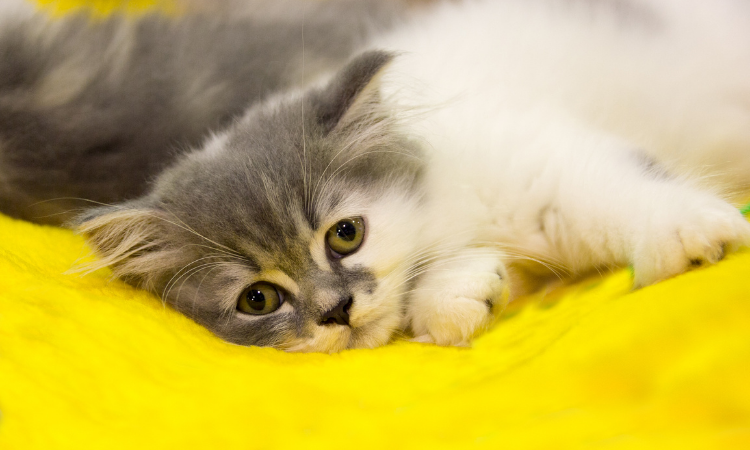Welcome to Animal Pain Awareness Month! In case you weren’t aware, September is the month that the International Veterinary Academy of Pain Management has set aside to make us aware that animals feel pain just like we do. As a veterinarian, seeing animals in pain is an everyday occurrence. It is also one that is often overlooked by even the most observant cat parents, as our kitties are truly the masters of disguise when it comes to hiding their pain. Let’s take this opportunity to discover what pain in cats can look like and how we can help.
Causes of Pain in Cats
If you were to ask any person, they could likely give you a long list of things that cause pain. You may be surprised to know that most causes on that list also apply to our feline friends. Cats aren’t immune to pain following surgery or an injury. As they age, arthritis can become a constant pain, and even eating something out of the ordinary can cause pain.
Not only do cats feel pain physically, as in, “Ouch, that hurts!” They can also feel it emotionally, meaning the physical feeling of pain can cause distress and anxiety, possibly because they don’t know what’s going on and aren’t sure they will ever be pain-free again.
Signs of Pain in Cats
The difference between pain in cats and pain in humans is that humans are much more willing to show vulnerability and express their pain, sometimes a little too loudly and frequently! Alternatively, cats prefer to hide their discomfort. This is basically due to instincts as you can imagine out in the wild world, any sign of vulnerability could mean the demise of a cat. They may be mighty hunters, but they are also prey and as a general rule, prey species don’t get far by showing weakness.
Because of this, it’s up to those closest to them to decipher signs of pain and act on them. In order to best determine when a cat is in pain, it’s important to first understand the normal. A lot of pain recognition depends on noticing something that seems off. For example:
- Changes in activity: Maybe your kitty is usually a mile-a-minute whirlwind, leaving a trail of toppled houseplants in their aftermath. Suddenly becoming a calm and quiet, prefer–to–lounge–on–the–couch all day kind of cat can indicate pain or discomfort. They simply don’t feel like moving around, especially at their normal breakneck pace.
- Change in appetite: Sometimes painful kitties don’t feel like putting in the effort to belly up to the dinner bowl. Even cats that choose food over everything else in life may suddenly lose their appetite if pain is a problem.
- Changes in behavior: The most loving and affectionate cat can suddenly turn aggressive if in pain. They may not want to be touched or played with and may act out angrily, choosing to bite, hiss, or scratch instead of cuddly snuggles and rubs.
A painful cat may also vocalize more, especially when doing activities that cause pain, like jumping off of the couch or if another critter tries to wrestle or play. They may also just follow you around and meow at you as if trying to pass on a message.
There may also be changes in your cat’s daily activities. Besides not wanting to eat, they may also stop grooming, causing their coat to become a mess of mats and tangles. Or they may over-groom, creating hairless patches especially over areas of pain, such as joints in the legs or back. A cat in pain may forego jumping, refusing to use their favorite perch or elevated bed. Or they may simply retreat into a dark corner, trying to weather out the painful storm without any interaction.
- Abnormal positions: If your cat is in pain, you may notice them standing, lying, or sitting in seemingly awkward positions. Often a hunched back or standing with all four feet close together can indicate pain, as well as an unwillingness to do those long, luxurious stretches.
How to Help a Cat That’s in Pain
First thing’s first, see your vet! If you’re hesitant because you aren’t a fan of pain medications, don’t worry. Veterinarians today are armed with an entirely different arsenal for pain management than just medications. They may suggest physical therapy, acupuncture, laser therapy, or natural supplementations to help make your kitty more comfortable. Of course, there are also numerous non-steroidal anti-inflammatory medications that are safe and easy to use as well. So, take advantage of Animal Pain Awareness Month this September and every month after to ensure that your feline friend is living a pain-free and healthy life.









